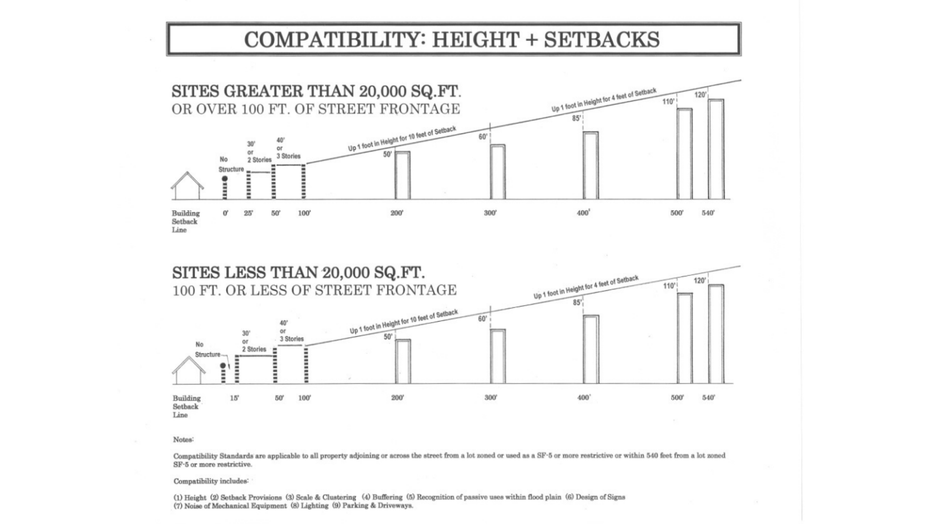Austin City Council overhauls building compatibility rules, allows for more development

AUSTIN, Texas - For much of Austin, development has grown significantly in past years. Skyscrapers seem to appear every other week downtown, and new construction of sprawling suburban developments is almost constant. But in between the extremes of steel-beamed towers and cookie-cutter carports, there’s been a void.
Medium-sized developments such as multiplexes and low-rise apartment buildings often only exist in older neighborhoods or not at all. This category of housing, often referred to by urbanists as the missing middle, is restricted and outlawed by building codes in many areas across the country.
This, in large part, has been due to compatibility rules.
Compatibility refers to a set of regulations for new construction which prevents larger buildings from being built near single family housing or single family zones. Buildings built within a certain proximity to single-family neighborhoods are required to stay beneath restricted heights, and in Austin, these restrictions were amongst the strictest in the nation.
"[Compatibility rules] are inherently regressive," said David Fouts, member of the Zoning and Platting Commission, during a public comment. "They treat low income renters and buildings as hazards that we have to protect for more affluent people."
These standards, according to current regulations, were created in order to preserve existing neighborhood layouts.
"The standards are designed to protect the character of Austin's older neighborhoods," reads a subchapter on compatibility in Austin's current code of ordinances. "[This ensures] that new construction and additions are compatible in scale and bulk with existing neighborhoods."

Existing compatibility standards in Austin are amongst the strictest in the nation. Current limits can extend up to 540ft away from a single family home or zone. (Courtesy of City of Austin)
Thursday’s city council meeting, however, brought a change to compatibility standards. An item introduced by Council Member José ''Chito'' Vela initiated a set of compatibility reforms, with recommended changes bringing compatibility limits down from a current maximum of 540 ft to 100 ft or less.
"Compatibility is a forcefield around all single family homes where nothing but short buildings can be built," Vela said in a tweet on Wednesday. "If you can’t build higher than the average family home on most land, you can’t construct housing at the scale we need."
The approved item also redefined several other aspects of compatibility, and it recommended a single city-wide standard to replacing current rules which span over 5 different standards and several dozen pages. Other proposals softened limits on multifamily homes to match those of single family units, expanded the types of compatibility waivers and removed limits on the number of stories in height-limited buildings, among other changes.
AUSTIN CITY COUNCIL NEWS
- Austin City Council approve items to address homelessness
- Phase one of Project Connect approved with final light rail design
- What is the process for putting city projects out to bid?
- Council votes to end city-mandated parking minimums for new developments
These proposals, according to community members who spoke during public comment, would encourage affordable housing and density.
"More housing supply will lower prices," said Michael Nahas, Vice Chair of the Austin Economic Prosperity Commission. "With more density comes higher economic growth, and that benefits the city."
"When we restrict buildings, what we're also talking about is restricting more people from living here," said Srikar Nalluri, a resident of District 9. "We should prioritize people over restricting what buildings look like."

